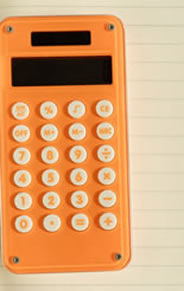Accomodations and Modifications
Accommodations and modifications are individualized supports used to help a student access the curriculum, by providing support in an area of unique need resulting from a disability. Accommodations and modifications are usually documented on a 504 plan or IEP; however, teachers may provide accommodations informally in their classroom.
Additionally, educators should understand how provision of modifications affect a student's grades, ability to earn a diploma, etc.
![]() Educators who implement accommodations and modifications should be knowledgeable about their district policy, and contact their administrators for clarification or with questions, as procedures change from district to district.
Educators who implement accommodations and modifications should be knowledgeable about their district policy, and contact their administrators for clarification or with questions, as procedures change from district to district.
The information included on the PENT website is intended to be informational only.
Difference Between Accommodations and Modifications
| Type | Definition | Examples |
|---|---|---|
| Accommodation
|
An accommodation is a change in the course, standard, test preparation, location, timing, scheduling, expectation, student response, or other attributes that provides access for a student with a disability to participate in a course, standard or test, and it does not fundamentally alter or lower the standard or expectation of the course, standard or test. |
|
| Modification
|
A modification is a change in the course, standard, test preparation, location, timing, scheduling, expectation, student response, or other attribute that provides access for a student with a disability to participate in a course, standard or test, and it does fundamentally alter or lower the standard or expectation of the course, standard or test |
|



Examples
| Type of Curriculum Adaptations | Examples | Accommodation or Modification? |
|---|---|---|
| Quantity: Adapt the number of items that the student is expected to accomplish. |
|
Accommodation |
| Time: Adapt the time allotted and allowed for learning, task completion, or testing. |
|
Accommodation |
| Level of Support: Increase the amount of personal assistance to keep the student on task or to reinforce or prompt use of specific skills. |
|
Accommodation |
| Input: Adapt the way instruction is delivered to the student. |
|
Accommodation |
| Setting: Adapt where the learner completes work or tasks. |
|
Accommodation |
| Organization: Inclusion of additional supports to help student manage workload, etc. |
|
Accommodation |
| Difficulty: Adapt the skill level, problem type, or the rules on how the learner may approach the work. |
|
Accommodation or Modification - depends on how used and/or what expected learning outcome is. |
| Output: Adapt how the student can respond to instruction. |
|
Accommodation or Modification - depends on how used and/or what expected learning outcome is. |
| Alternate Goals: Adapt the goals or outcome expectations while using the same materials. When consistently utilized, this is only for students with moderate to severe disabilities. |
|
Modification |
| Functional Curriculum: Provide different instruction and materials to meet a learner’s individual goals. When consistently utilized, this is only for students with moderate to severe disabilities. |
|
Modification |
Substantially altered by Diana Browning Wright with permission from Jeff Sprague, Ph.D. from an original by DeSchenes, C., Ebeling, D., & Sprague, J. (1994). Adapting Curriculum & Instruction in Inclusive Classrooms: A Teachers Desk Reference. Publication. Adapted here for accessability.


